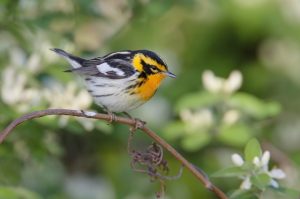We’re excited to announce a volunteer opportunity that has big implications for our feathered friends!

Bright lights at night and reflective or clear glass during the day are some of the biggest threats to a bird’s safe journey through and over our city. We need volunteers to help collect data on bird strikes (collisions with glass) by walking specific routes early in the morning looking for dead or injured birds near windows and buildings. There are monitoring opportunities on Zoo grounds or in downtown Cincinnati during peak migration seasons, mid-March until the end of May and mid-August through the end of October. If you enjoy early morning strolls with friends and getting your steps in, contact Mollie for more information: [email protected]. (And even though looking for dead or injured birds may not sound appealing, collecting this data will really help us better understand the scale of the issue in our region.)
Read on if you’d like to know more about the bird strike issue and what we are doing here in Cincinnati to help! You can also visit www.LightsOutCincinnati.org
The first problem is nighttime lighting, especially on tall buildings in urban cores where the concentration of light is high. Birds are attracted to the light, which can cause them to become disoriented. They may crash into windows or fly around the illuminated area until they become exhausted and fall. Secondly, many songbirds migrate at night using lunar paths and starfields, and the artificial lights and ambient “glow” from our buildings and roadways make it harder to navigate to their destination. When they do land in urban cores during the night, they wake up in the morning surrounded by reflective or clear glass panes and often strike the windows, causing major injury or death.
Luckily, there are some simple solutions. We can dim or extinguish our lights between midnight and 5:00 am, especially during migration seasons. We can also apply bird-friendly treatments to glass to help them see the surface. Here at the Zoo, we are already energy (light) conscious, and we are now taking the next step to identify glass pane problem areas. We are also looking at our downtown urban core to measure the impact on our traveling-through and local birds as part of the Lights Out Cincinnati program, a collaborative effort with the Zoo, Cincinnati Museum Center, Cincinnati Nature Center and Ohio Lights Out. There are 26 U.S. cities with Lights Out programs, all with the goal of encouraging bird-friendly practices in their communities so we’re really happy to jump on that train! Please check out our website: www.LightsOutCincinnati.org
Thanks in advance for helping us collect this data!
Mollie (& birds)


